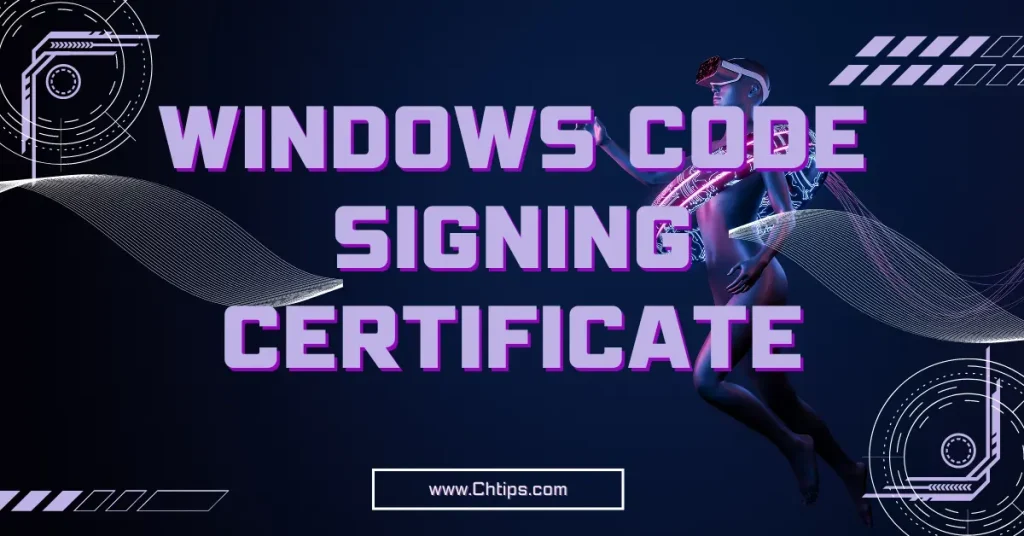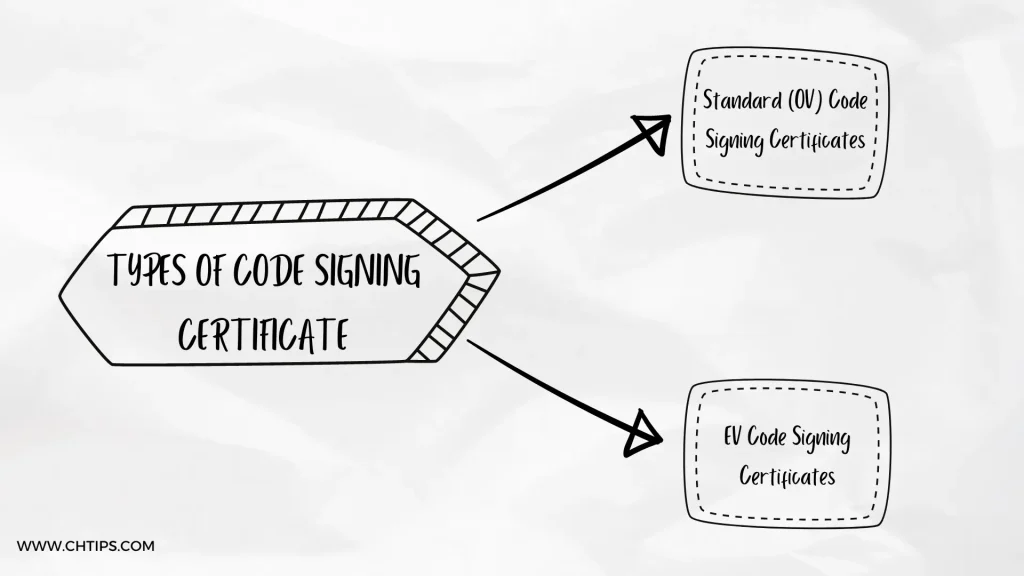Ensuring end users download genuine software is imperative for software developers. Genuine software offers heightened security, consistent updates, and reliable customer support.
Users benefit from enhanced protection against potential threats and vulnerabilities, safeguarding their data and privacy.
Here’s where the Windows Code Signing Certificate comes in. It plays a vital role in verifying software integrity, assuring users of legitimate origin, and safeguarding against malicious alterations during download or installation.
What is Windows Code Signing Certificate?
Code signing certificates are digital certificates just like SSL Certificate used by developers to sign applications, software’s programs.
Windows Code Signing certificate is a critical component in software development, specifically tailored for Windows operating systems.
Its purpose lies in digitally signing codes to guarantee authenticity and integrity.

Issued by reputable Certificate Authorities like DigiCert, Comodo, Sectigo, etc. This certificate acts as a seal of trust, assuring users that the code remains unaltered and originates from a reliable source.
When you obtain a code signing certificate Windows as a developer, you can use it to sign your software code before distribution.
A unique cryptographic signature is generated and embedded into the code during this process.
This signature acts as a digital fingerprint that proves the code’s authenticity.
When end-users download your signed code, their operating system checks the signature against the certificate’s public key. If it matches, the software is not only considered genuine.
It is also considered safe, and, untampered with. And, the significance of this certificate cannot be overstated.
The Windows Code Signing certificate helps establish a vital trust bridge between developers and users.
This makes people more willing to download and use the software without fear of compromise.
Moreover, the certificate also aids in building credibility for developers and publishers.
Knowing that their code bears the seal of authenticity, users are more likely to place their trust in the developer’s products, leading to increased download and usage.
Why is Code Signing Certificate Required?
Code signing certificates play a pivotal role in enhancing application security and user experience.
They offer several benefits that contribute to a safe and reliable digital ecosystem.
Key among these benefits includes.
- Cryptographic Verification & Integrity Assurance: Code signing allows systems, like Windows Defender Application Control (WDAC), to verify the authenticity of files before executing any code. Cryptographically confirming that the file hasn’t been altered since signing ensures that users receive unmodified and trustworthy software. This prevents tampering and reduces the risk of malware infiltration, safeguarding sensitive data and maintaining the integrity of the application.
- Real-world Identity Verification: A Microsoft code signing certificate associates the file with a genuine identity, be it a company or an individual developer. This identification streamlines trust decisions, making it easier for policies to allow or deny specific software based on the source. Moreover, linking code to a real-world entity holds developers accountable, discouraging malicious use or abuse of code signing. This accountability ensures responsible practices in the digital landscape.
- Safe and Smooth User Experience: As earlier mentioned, code signing instills mutual trust between vendors and consumers, fostering a secure user experience. When customers use code-signed software or files, they gain confidence in the security of the code, knowing it has undergone authentication and validation. This minimizes security warnings and installation failures, ensuring a smooth user experience. Users can seamlessly use trusted applications with reduced interruptions and increased confidence, enhancing their overall satisfaction.
Useful Video : Windows Code Signing Certificate
What are the Types of Code Signing Certificate Available? How to Choose One?
Understanding the types of Code Signing Certificates is crucial for software developers to build trust and credibility.
There are two main categories – Standard (OV) Code Signing Certificates and EV Code Signing Certificates.

- Standard (OV) Code Signing Certificates: Also known as Organization Validated certificates, these require the Certificate Authority (CA) to verify your organization’s identity, enhancing your reputation and trustworthiness. Used by various entities, including government organizations, this certificate is essential for securing your code and assuring customers of its legitimacy.
To address past security concerns, new and reissued OV certificates will soon be stored on FIPS 140-2 Level 2 and Common Criteria EAL4+ compliant hardware.
They’ll also be delivered to users via USB devices and Hardware Security Modules (HSM) like EV certificates.
- EV Code Signing Certificates: Extended Validation Code Signing Certificates offer users the highest level of trust. Issuing an EV certificate requires additional documentation, ensuring thorough verification of your legal existence, identity. These certificates grant an instant Microsoft SmartScreen badge for Windows 10 drivers, boosting your authority and confirming your identity.
Here are three quick tips to help you decide the best code signing certificate for you;
1. Consider Stringency of Requirements:
- OV Code Signing Certificate: If you require a certificate with less stringent requirements and a quicker issuance process, the OV certificate is suitable. It offers flexibility and ease of acquisition.
- EV Code Signing Certificate: The EV certificate is ideal if you’re seeking the highest level of trust and reputation. Though the requirements are stricter and the verification process more rigorous, the SmartScreen badge instantly boosts your software’s reputation.
2. Evaluate Reputation Building.
- OV: With the OV certificate, your software’s reputation will build organically over time. It may take some effort to establish credibility among users.
- EV: In contrast, the EV certificate provides an instant reputation boost due to the SmartScreen feature, enhancing user trust and confidence from the start.
3. Weigh the Level of Trust Needed.
- OV: If you prioritize a standard level of trust and authentication, the OV certificate suffices for most applications.
- EV: For projects demanding the highest level of user trust and assurance, the EV certificate’s stringent verification process and instant reputation boost make it a preferred choice.
Recommended Reading
- Top 10+ Advantages and Disadvantages of Accounting Software
- What is Smart Accounting Software | 7 Types | Basic Uses
- Computer Basic Tutorials
The Bottom Line
In essence, the Windows Code Signing certificate serves as a powerful tool for software developers to bolster their reputation, protect users from potential harm, and cultivate a secure and thriving Windows community.
Its simplicity lies in the digital signature, yet its impact is profound, helping create a safer and more trustworthy software ecosystem for all.